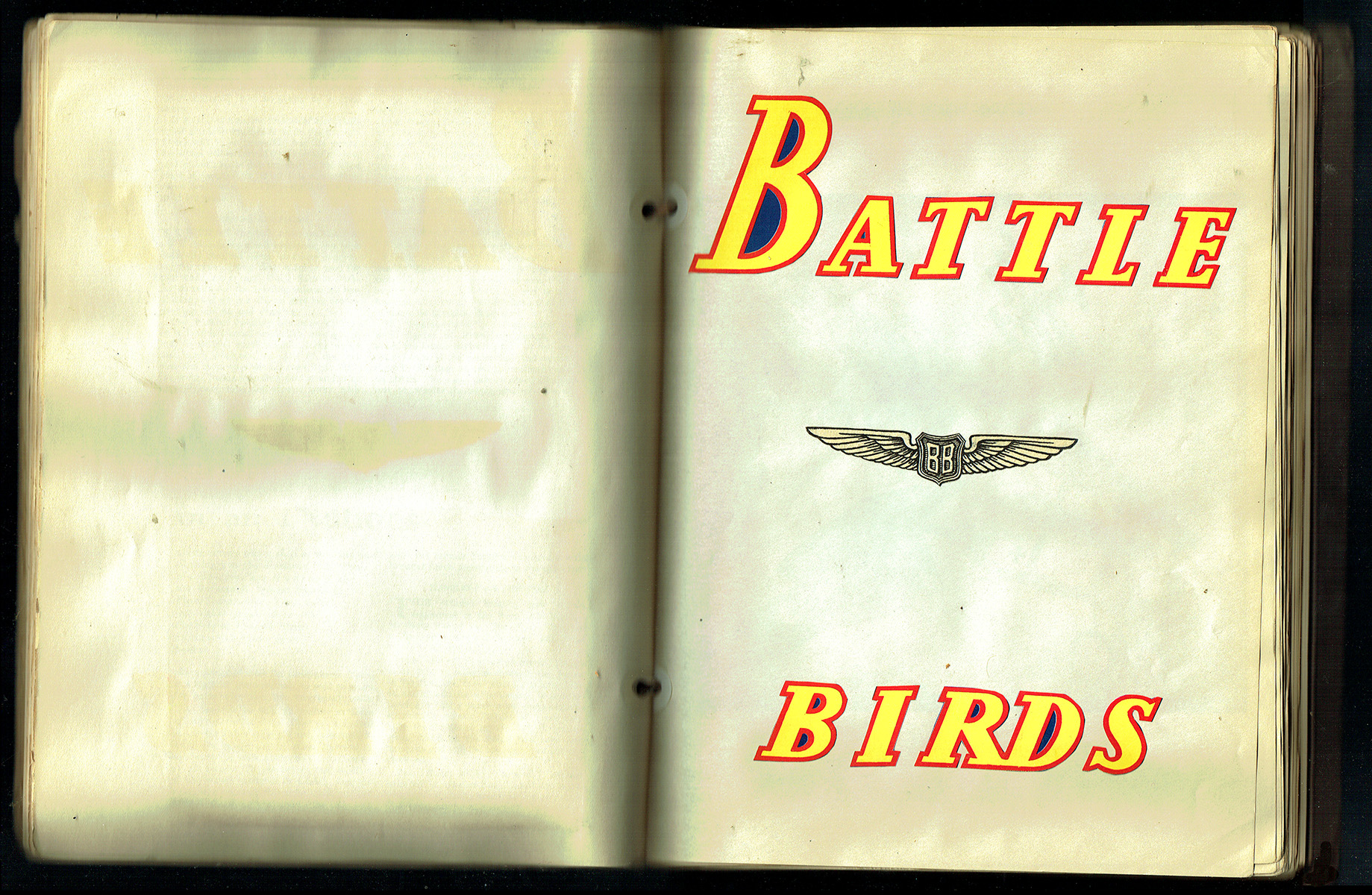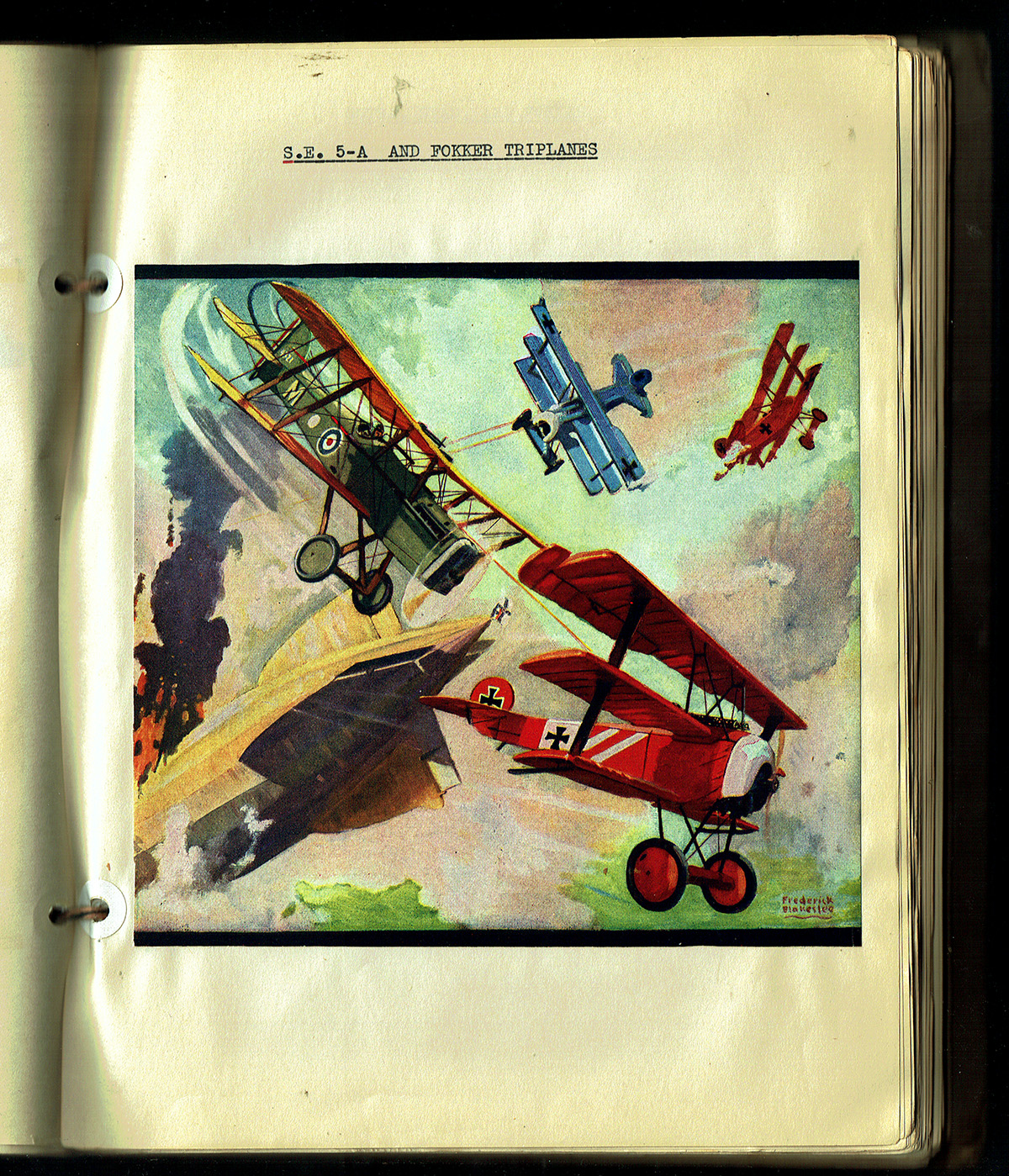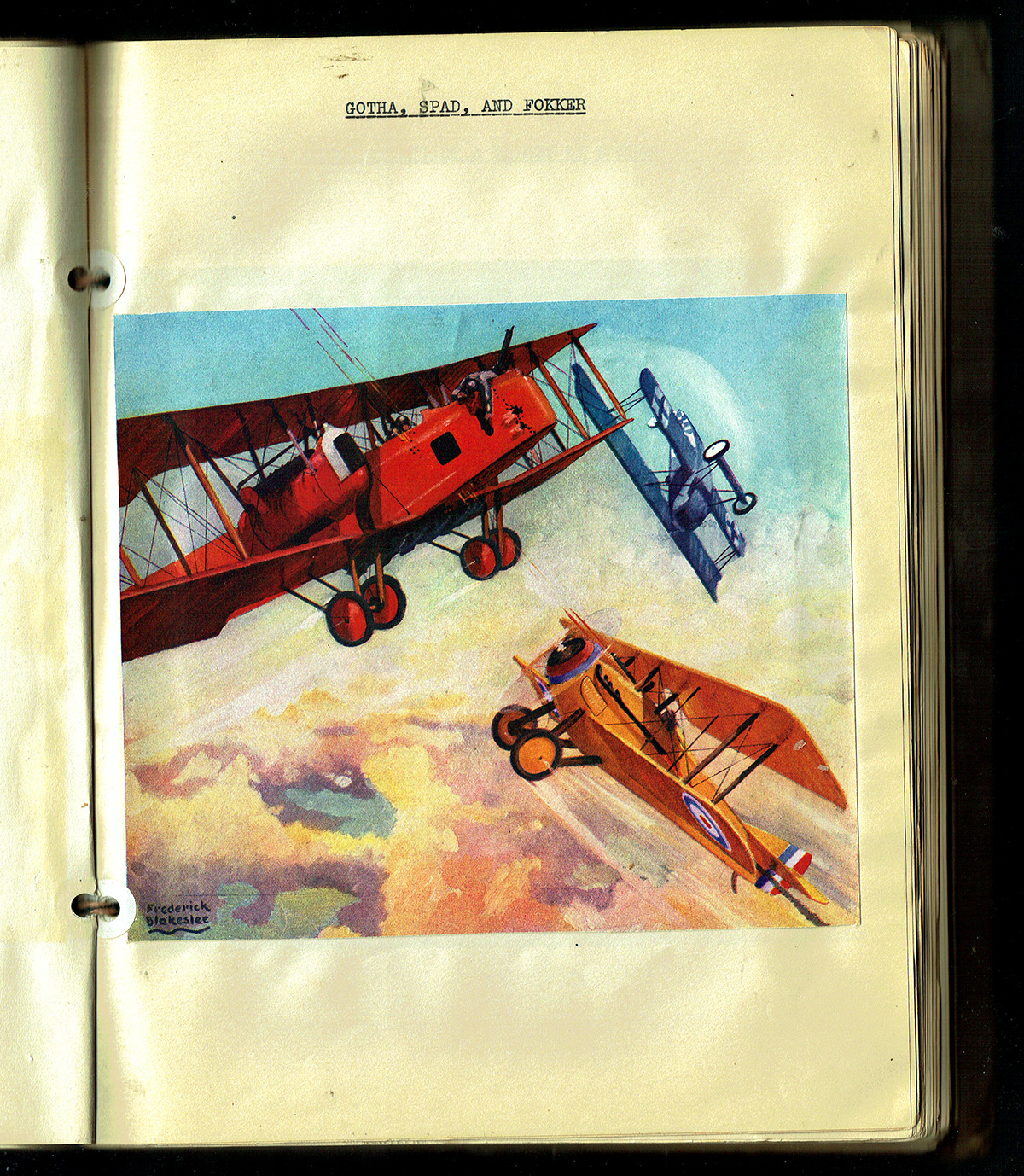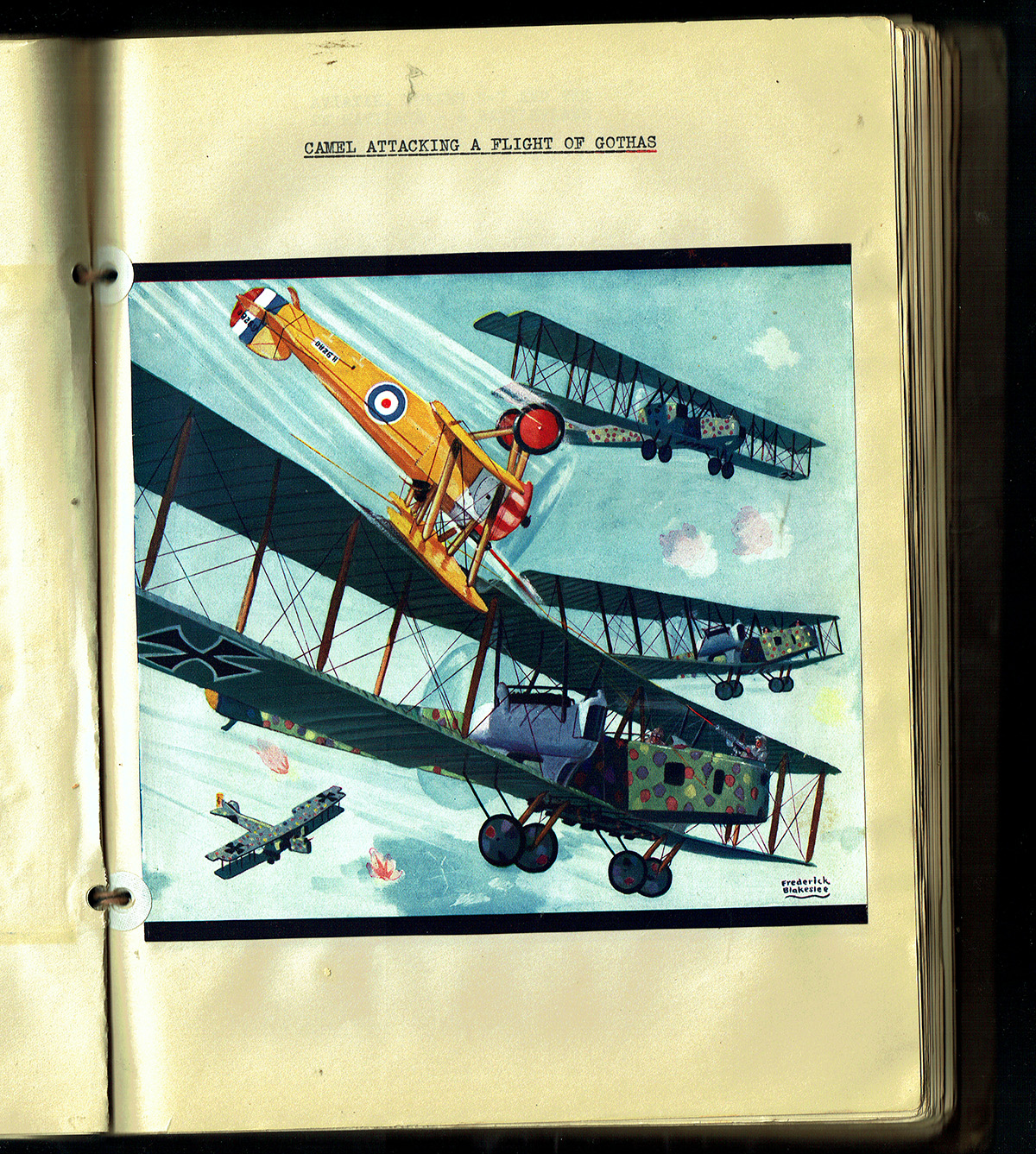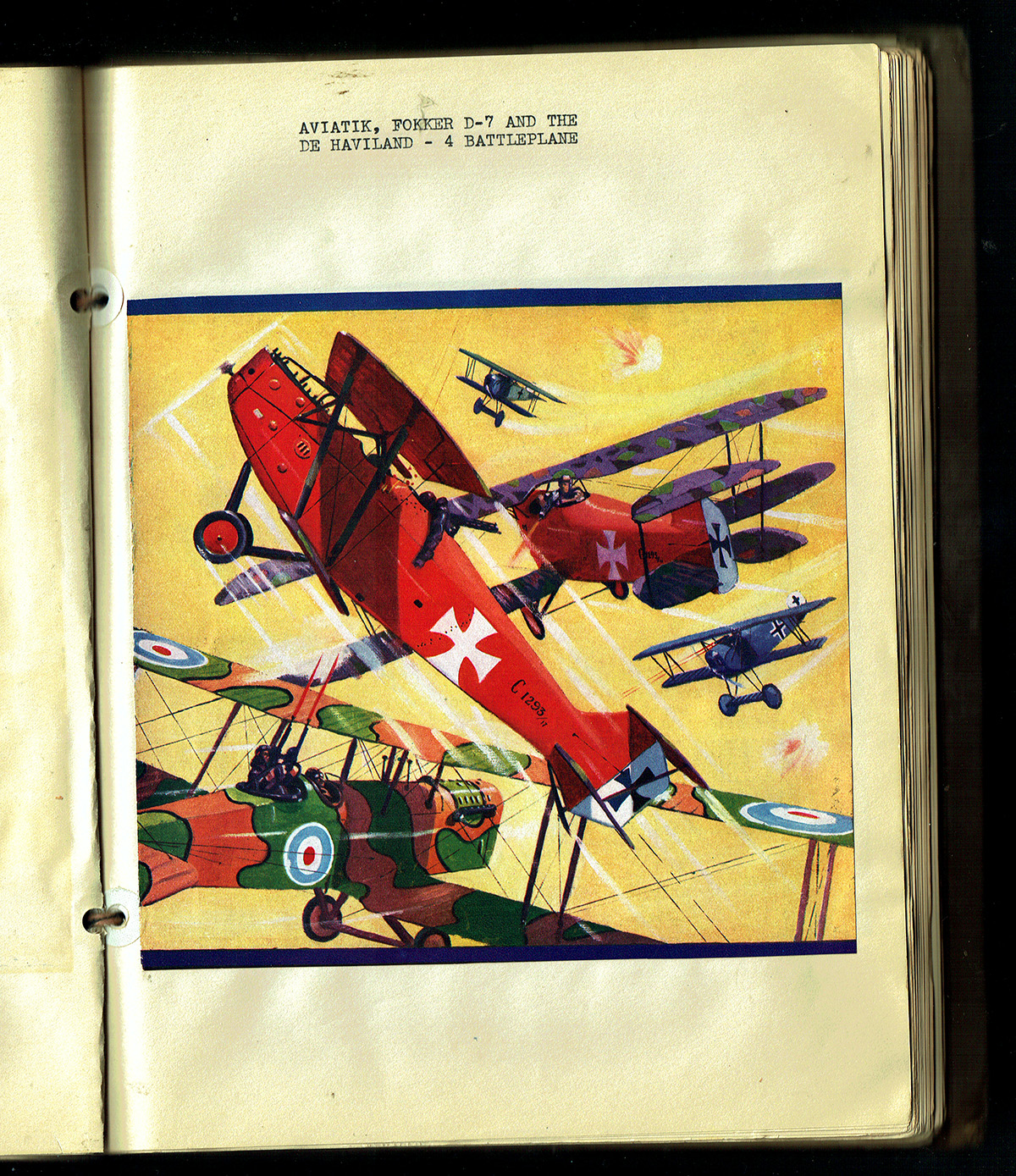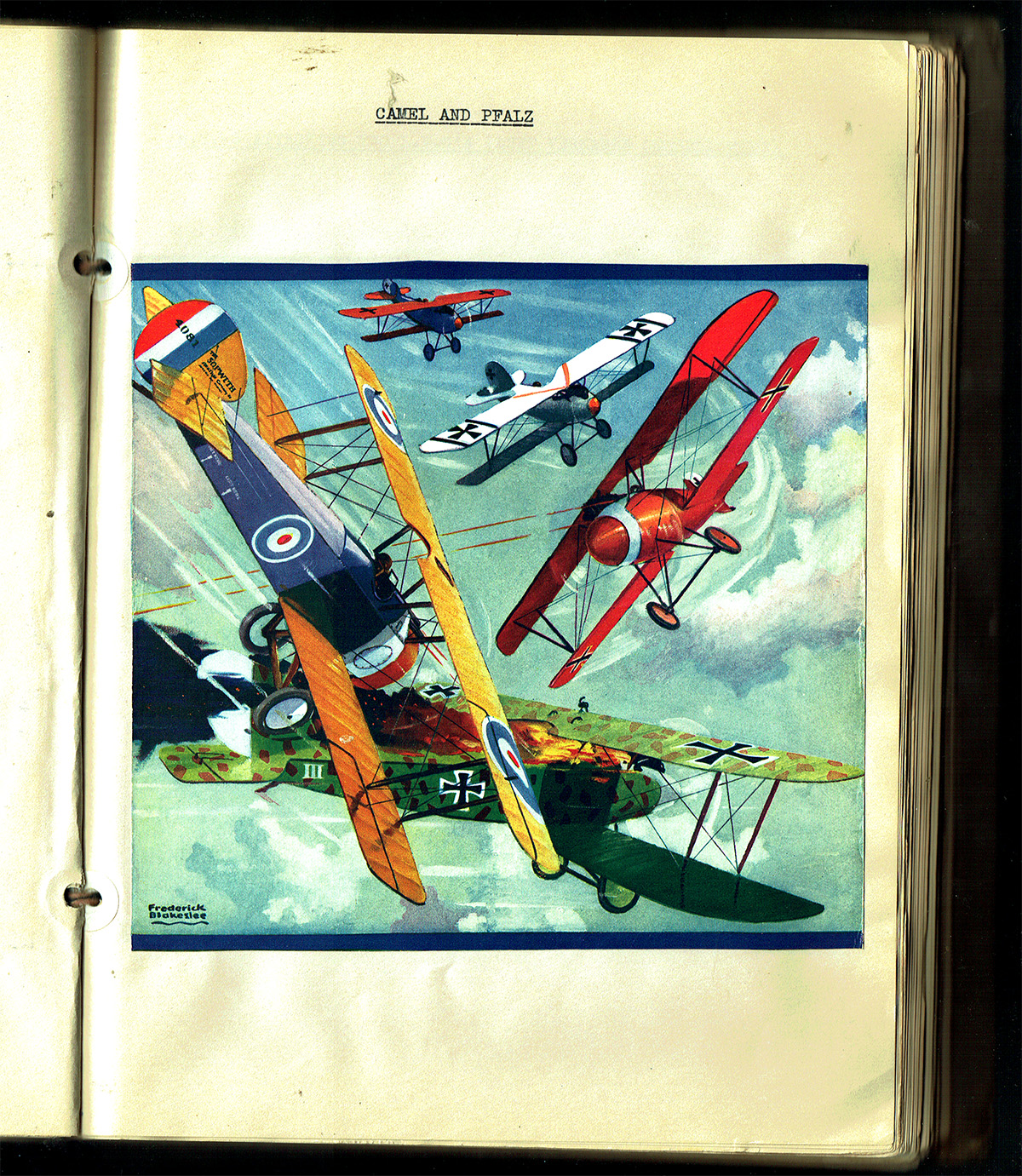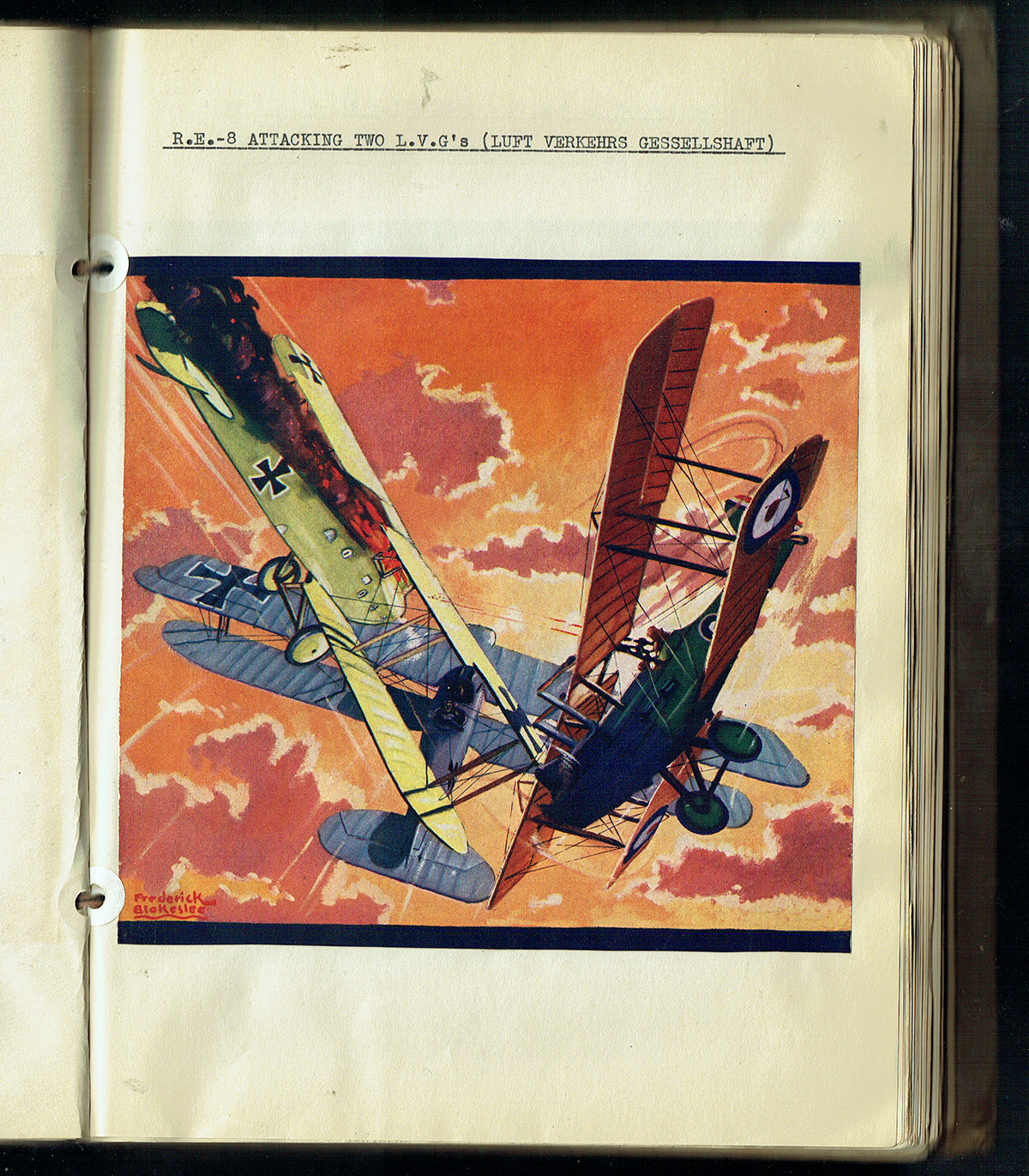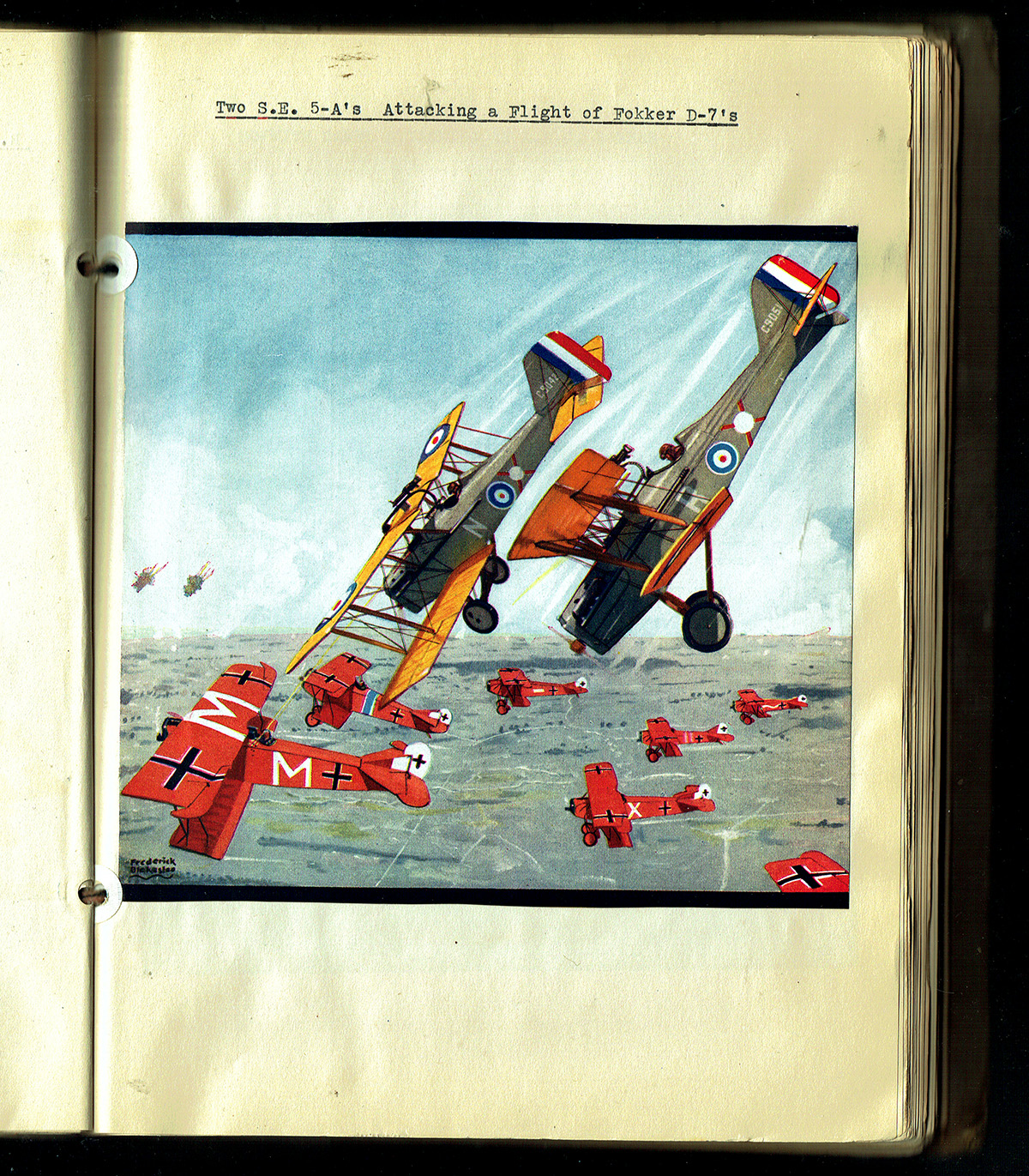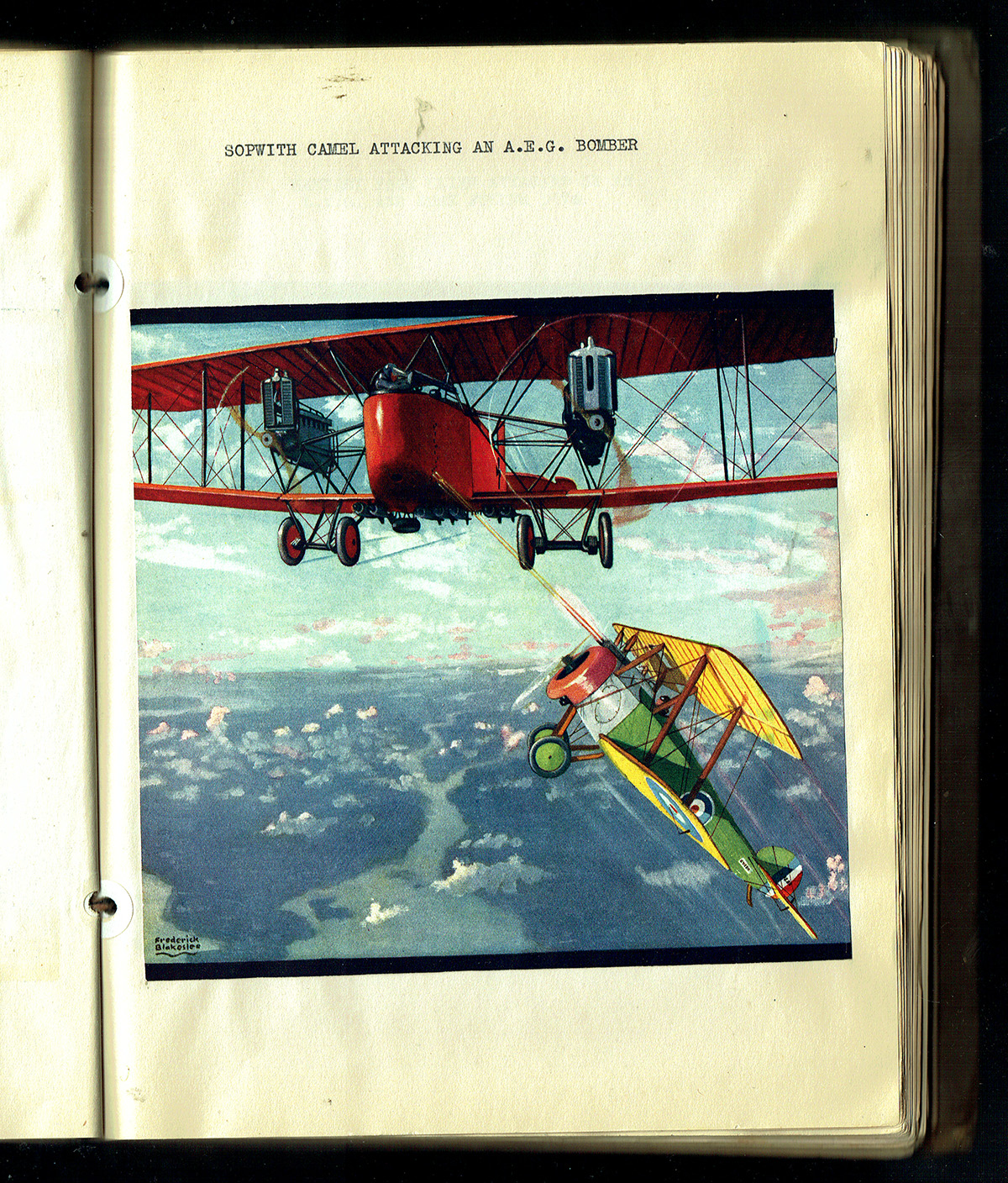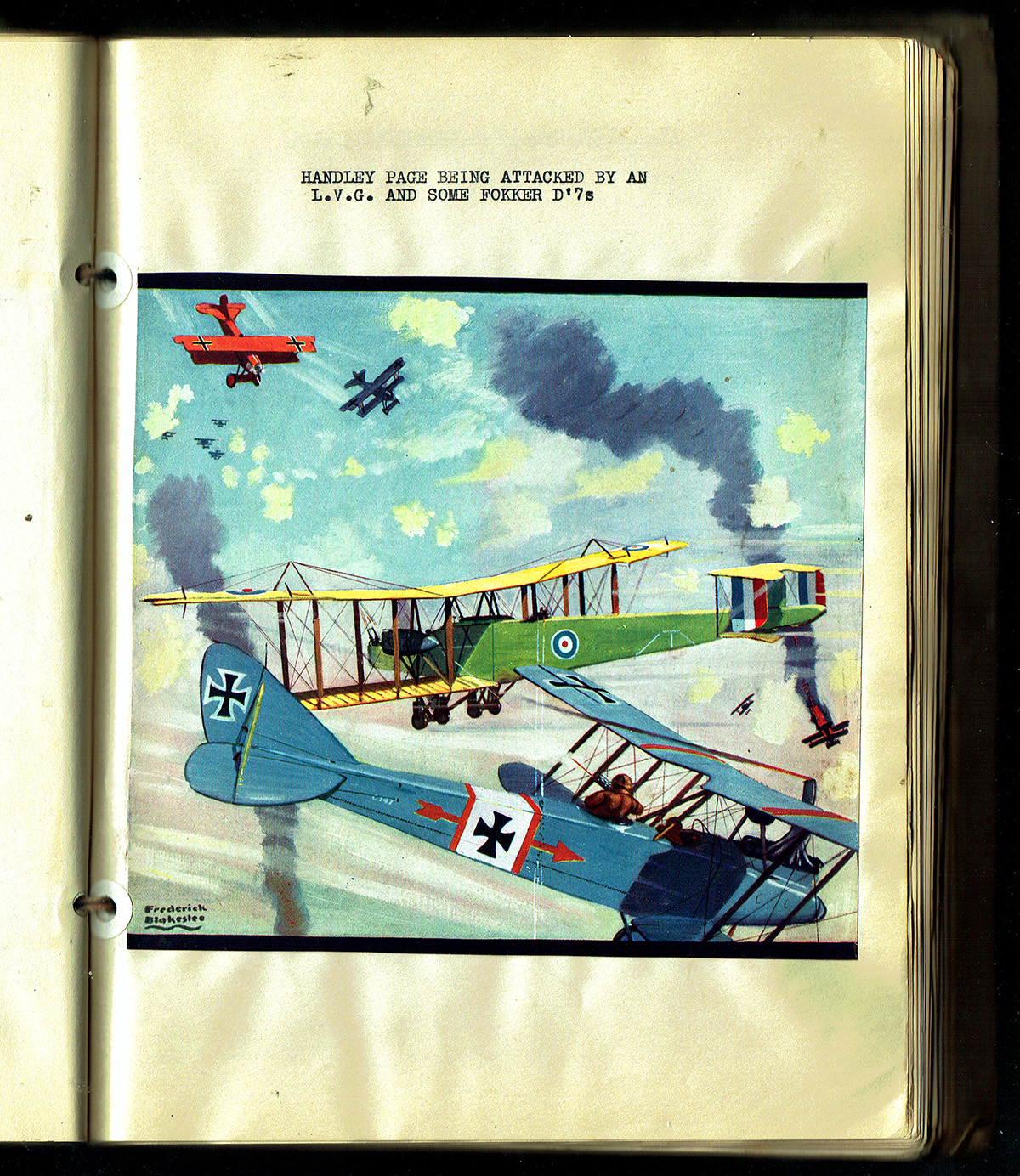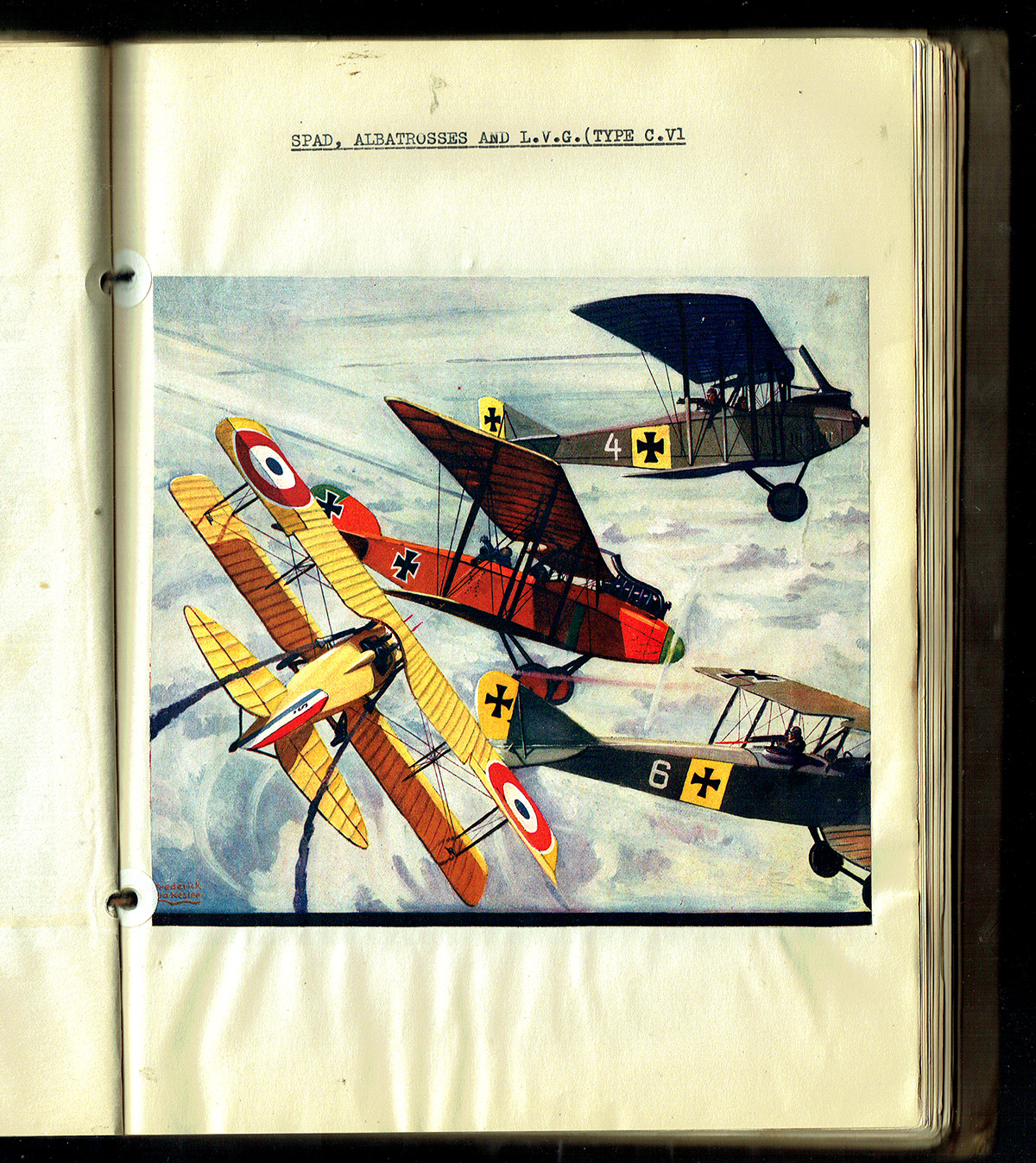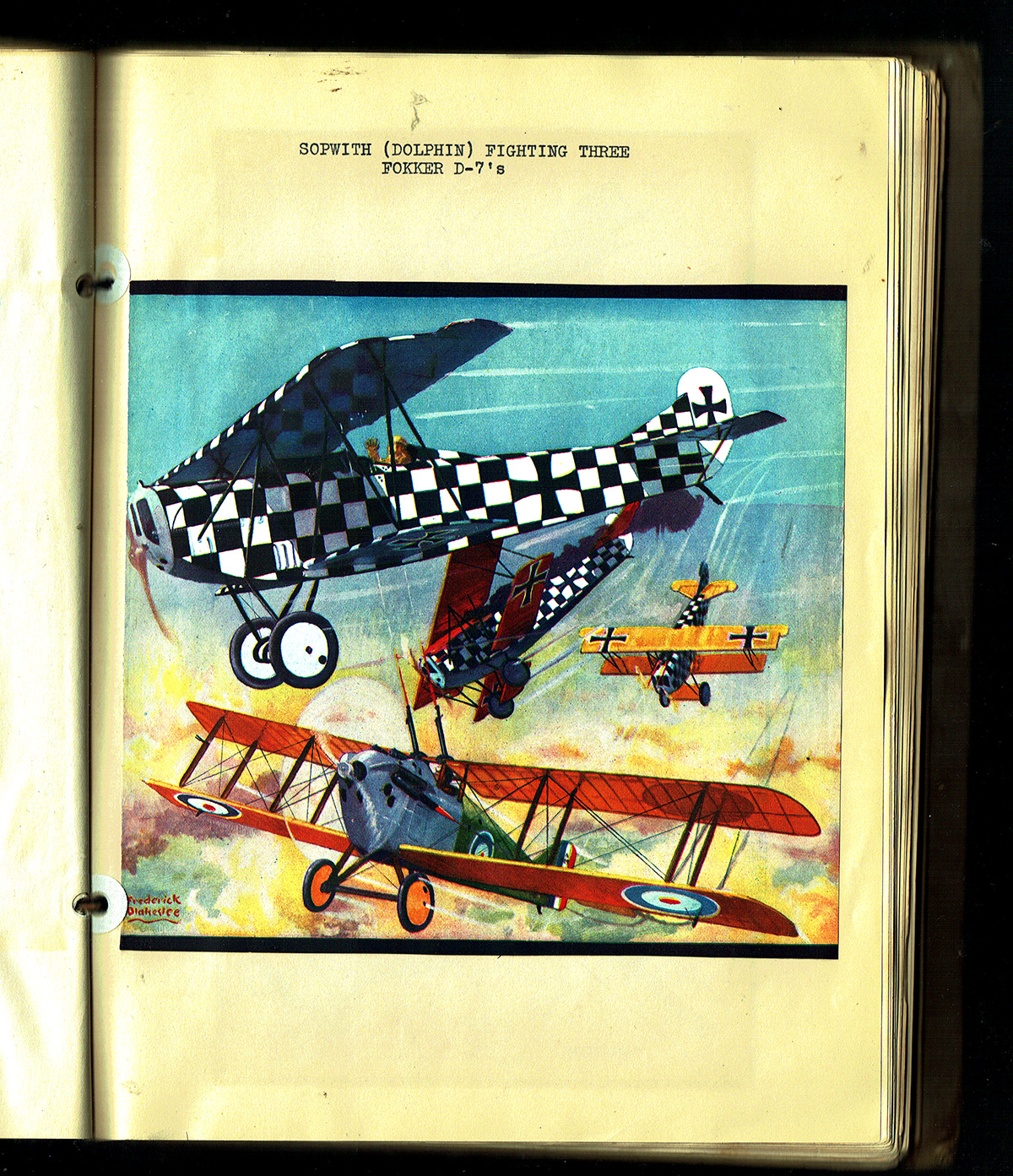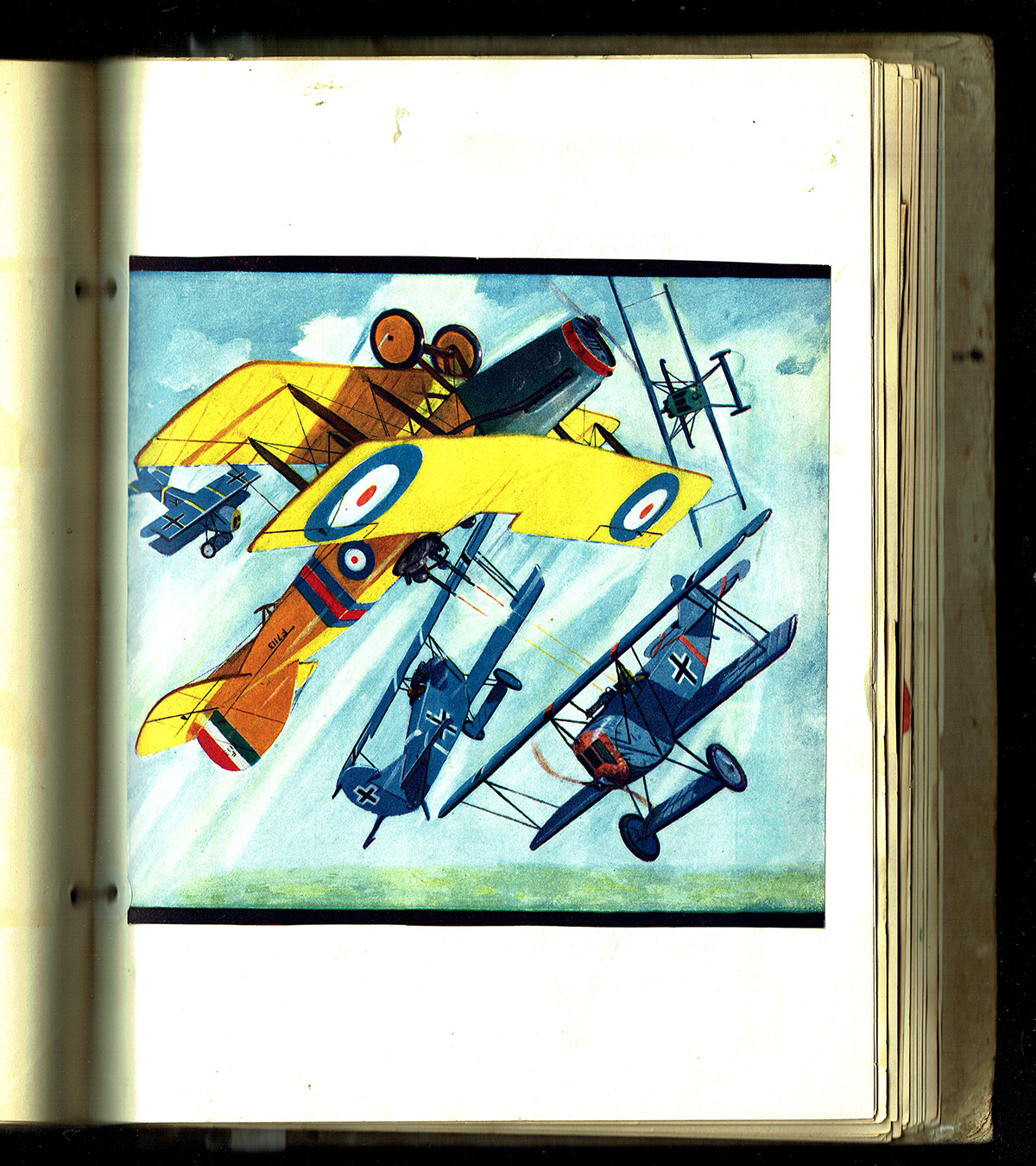Editor’s Note: This month’s cover is the fourteenth of the actual war-combat pictures’ which Mr. Blakeslee, well-known artist and authority on aircraft, is painting exclusively for BATTLE ACES. The series was started to give our readers authentic pictures of war planes in color. It also enables you to follow famous airmen on many of their amazing adventures and feel the same thrills of battle they felt. Be sure to save these covers if you want your collection of, this fine series to be complete.
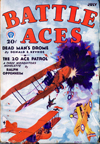 BECAUSE of a promise not to reveal his identity, the hero of this combat will be called Jim. He was a British war pilot and has a great fund of experiences, some of which he has been good enough to relate for use in this magazine.
BECAUSE of a promise not to reveal his identity, the hero of this combat will be called Jim. He was a British war pilot and has a great fund of experiences, some of which he has been good enough to relate for use in this magazine.
This month’s cover story is a most unusual one. Of the seven men involved in the fight only one survived and he, as a result of the battle, spent long months in the hospitals in both France and England. As for the three planes, all were totally wrecked; in fact only portions of the German ships were ever found.
The combat took place toward the end of the war, not long after the exploit of Jim’s which was related in last month’s issue of Battle Aces. On this occasion Jim started out with his patrol early one morning and flew toward the German lines. As the planes advanced the weather suddenly changed. The earth disappeared and the sun burned red through the haze which rapidly gathered. Flying conditions fast became impossible in the face of the gathering storm, so Jim, who was leading the patrol, gave the signal to turn about for home.
The weather changed from bad to worse and soon Jim discovered that he was flying alone. He knew that his patrol had been forced to separate and to fly each man for himself. He decided to head due south in the hope of flying out of the storm, for he could not find his own field and it was suicide to land where he was. Suddenly the form of an immense bomber loomed up ahead, rushing directly at him out of the haze.
It was not until nearly a year later that Jim was able to recall what happened from that moment on.
Let me tell you the story from the ground.
At about 11:30 A.M. two dark objects whirled out of the haze. One landed in a street and proved to be the body of a man, his clothes in shreds and too mutilated for identification. The other object hit the roof of a building in Châlons-sur-Marne, and was followed by splinters of wood, metal and scraps of red fabric. When dug out of the basement this proved to be the wreck of a Mercedes engine.
A few moments later the tip of an airplane wing fell in the outskirts of the same town, preceded by several explosions. It was also reported that at about the same time two Mercedes engines, with separate bits of metal and parts of the wings of an airplane, fell near the road between Châlon and Chepy. Then reports came in of a rain of wreckage falling all over the district. To cap the climax, another Mercedes engine, with more wreckage, fell at Marson, three and a half miles from Chepy. What could be the cause of this deluge of Mercedes engines? All came down at approximately the same time at widely separated points. The bodies of five more men and wreckage were found near Châlon and Chepy.
To add to the interest of the day, at Sommesons, nearly twenty miles from Châlons, an S.E.-5 suddenly shot out of the haze, barely missed a farm house, and spread itself out over the adjacent landscape. The pilot was sent to a hospital unconscious, where he stayed in that condition for several clays. As he was the only one who seemed at all connected with the affair, the matter remained a mystery until a year later when his memory had fully returned. The following is what happened.
As the bomber loomed up ahead, Jim recognized it as a German A.E.G. Contrary to general practice, it was not camouflaged but was painted a bright red. Jim pulled up to pass over. As he zoomed up he saw another bomber almost directly overhead. The nose of his ship pointed directly at it and with an instinctive movement, he pulled his trigger. Almost instantly there was a terrific explosion. The wreckage of the bomber was thrown in all directions. Jim was so close that parts of the Boche ship shattered his propeller and damaged his right wing. The bomber dropped, shearing off the left wing of the A.E.G. underneath close to the fuselage. Jim does not yet know how he escaped the tangle of flying wreckage and ships. The next moment they had vanished and Jim began a long glide earthward; because of the thick haze, his ship crashed, as has been related. (For purposes of design the scene on the cover has been painted in bright sunlight, but in reality the haze was extremely dense.)

The A.E.G. bomber was powered by two 260 h.p. Mercedes engines and carried two guns. At 5,000 feet its speed was 90 m.p.h. and its landing speed about 75 m.p.h. It had one fault. Its elevators did not function well when landing. It was also found advisable not to fly the machine without a passenger in the front seat.

“A.E.G. Bomber” by Frederick M. Blakeslee (July 1932)

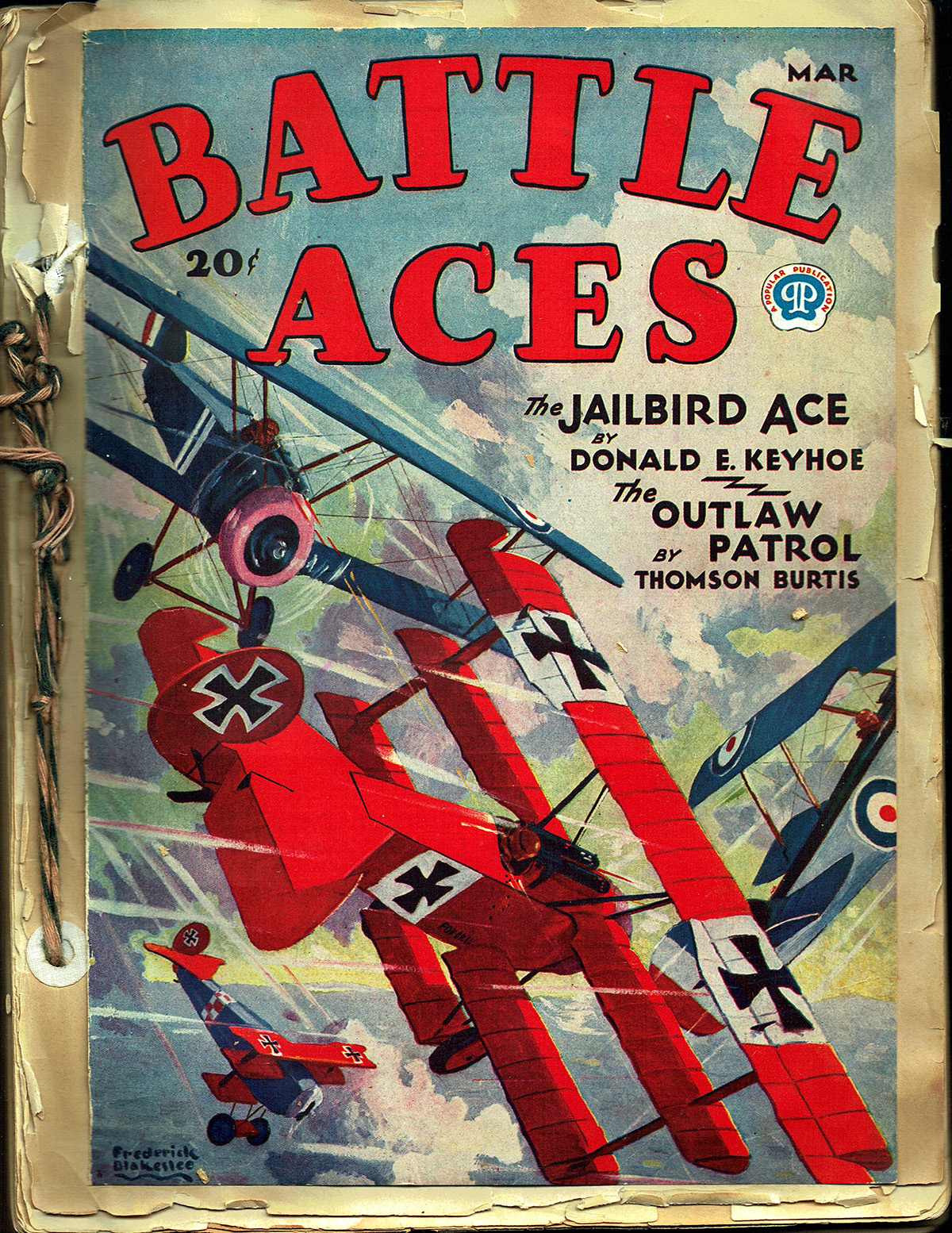 Like many in the late 20’s and early 30’s, Robert O’Neil was fascinated with aviation and as such, a large part of both volumes of his scrapbooks is taken up with a cataloging of the many different types of planes. In addition to Flying Aces’ “War Planes Album” and Sky Birds’ “Model Planes of All Nations”, Robert also featured Frederick Blakeslee’s magnificent Battle Aces covers.
Like many in the late 20’s and early 30’s, Robert O’Neil was fascinated with aviation and as such, a large part of both volumes of his scrapbooks is taken up with a cataloging of the many different types of planes. In addition to Flying Aces’ “War Planes Album” and Sky Birds’ “Model Planes of All Nations”, Robert also featured Frederick Blakeslee’s magnificent Battle Aces covers.